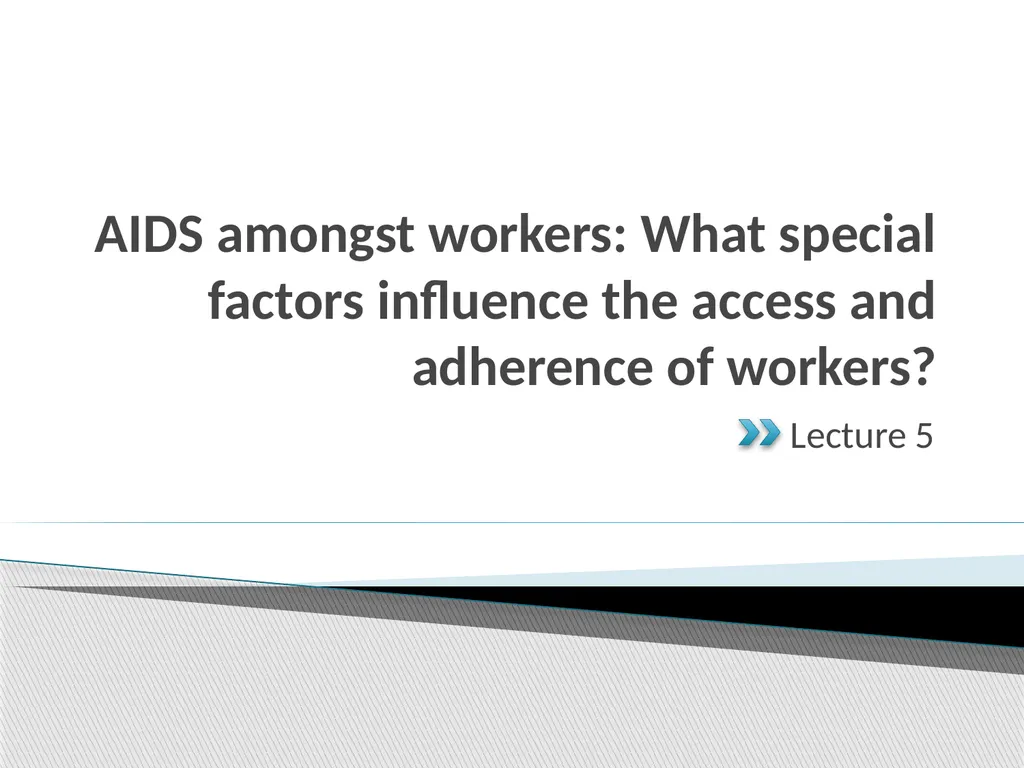
AIDS amongst workers: What special factors
Author: test | Published: 2025-06-23
Description: AIDS amongst workers: What special factors influence the access and adherence of workers? Lecture 5 For nurses to gain a solid understanding of the special HIV-management needs of HIV positive workers to optimize access and adherence To
Download Presentation
Download the PPT/PDF: Download
Transcript:
Loading transcript…